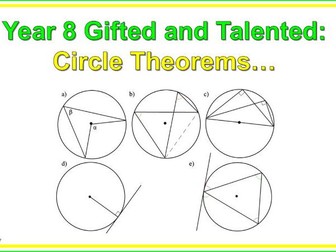
GCSE Maths - Equations of Parallel and Perpendicular Lines.
This is a full lesson that I’ve made on finding the equation of parallel and perpendicular lines. It goes through how to find equations of lines which are either parallel or perpendicular and pass through a specific point. There is a recap on y = mx + c and finding the equation of straight lines before moving on to discovering the rules with parallel and perpendicular lines. There are numerous tasks throughout all with answers included - there is a lot of content so some stuff could be taken out or adapted as you wish. I have also attached the scanned worksheets that have been used and taken out of the Edexcel 9-1 Workbook.

